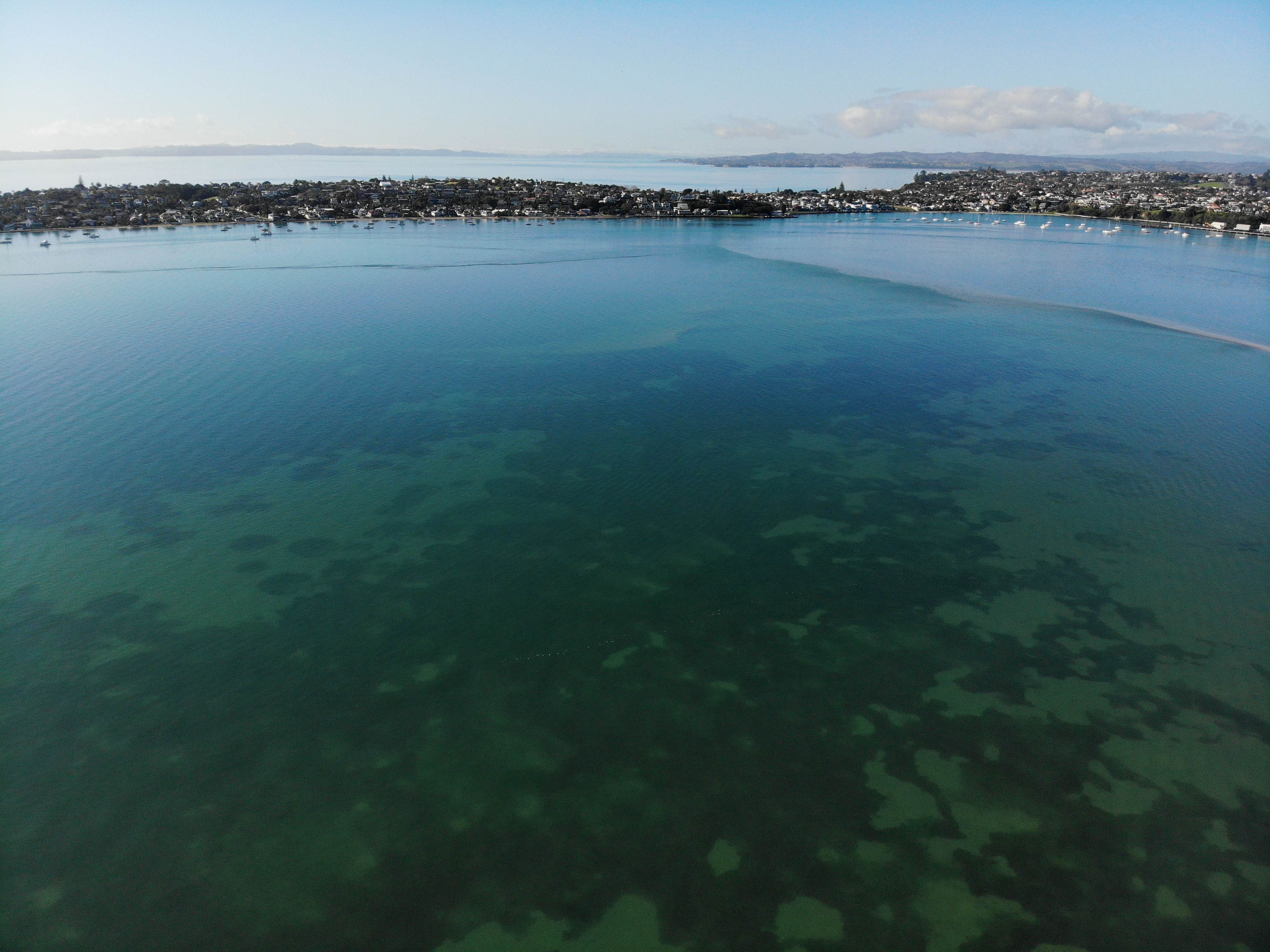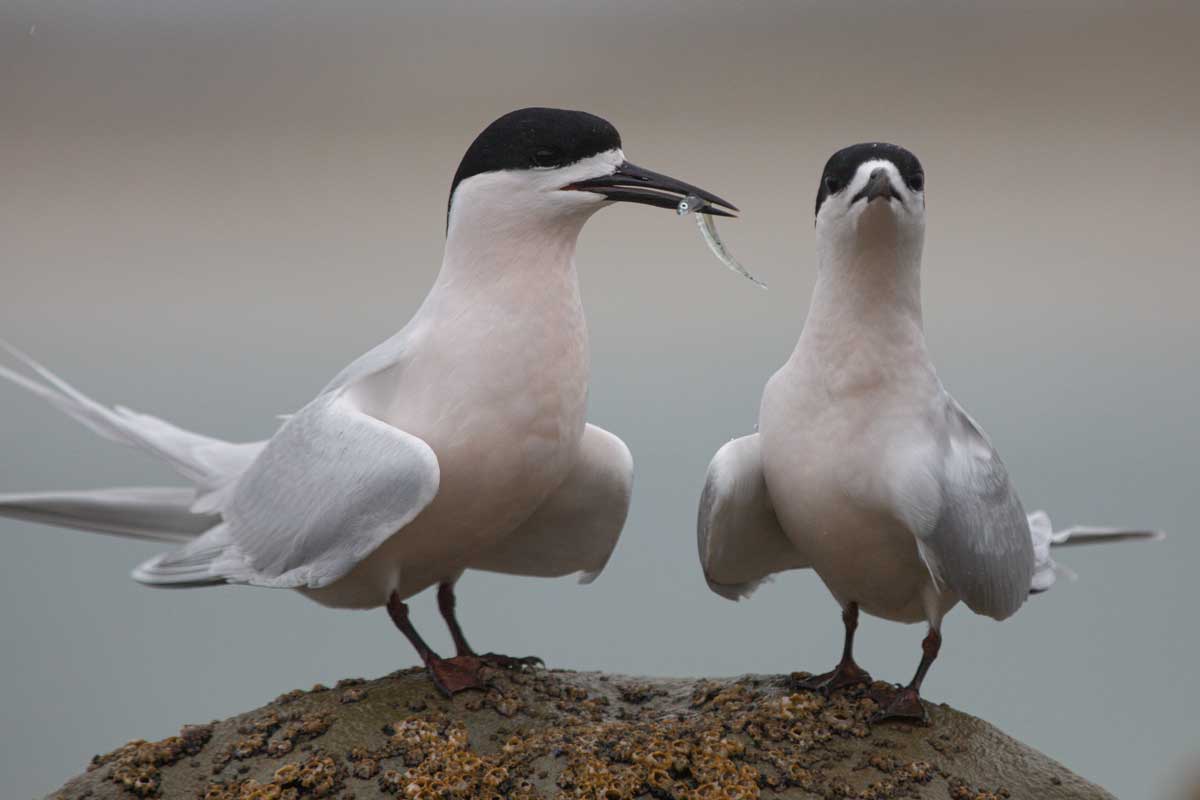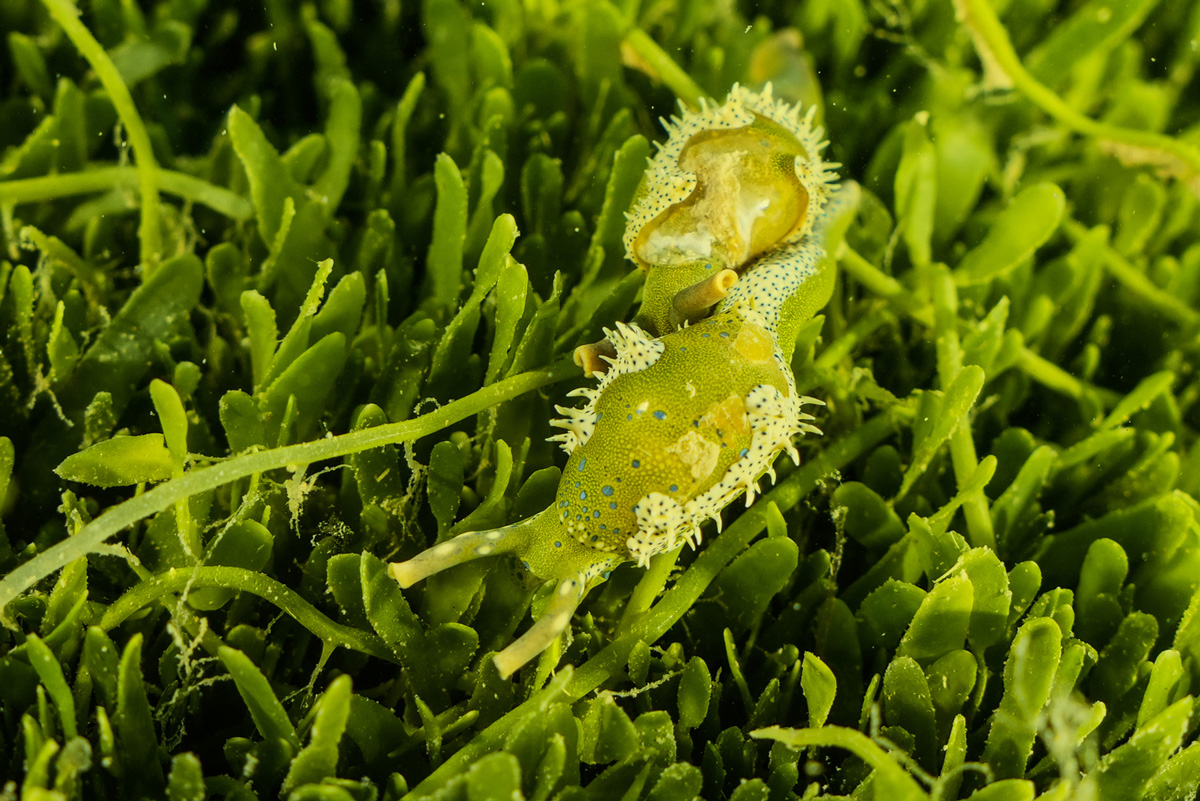While sailing my dingy in the 70’s and training for Olympic Windsurfing events from the 80’s (along with my sisters Barbara & Wendy), I got to know most of the Tāmaki Estuary and a lot of Auckland’s shoreline very well, but I had not noticed seagrass meadows in Auckland until comparatively recently.
About 15 years ago, while kite surfing, I observed a 10 square meter seagrass patch appear on the south side of the Tahuna Torea sand-spit in the Tāmaki Estuary. Now it’s a meadow that’s 100’s of square meters and covers much of the intertidal zone on the north side of the sand spit. Seagrass is now established west along the coastline as far as Okahu Bay and east along Howick’s Eastern Beaches.
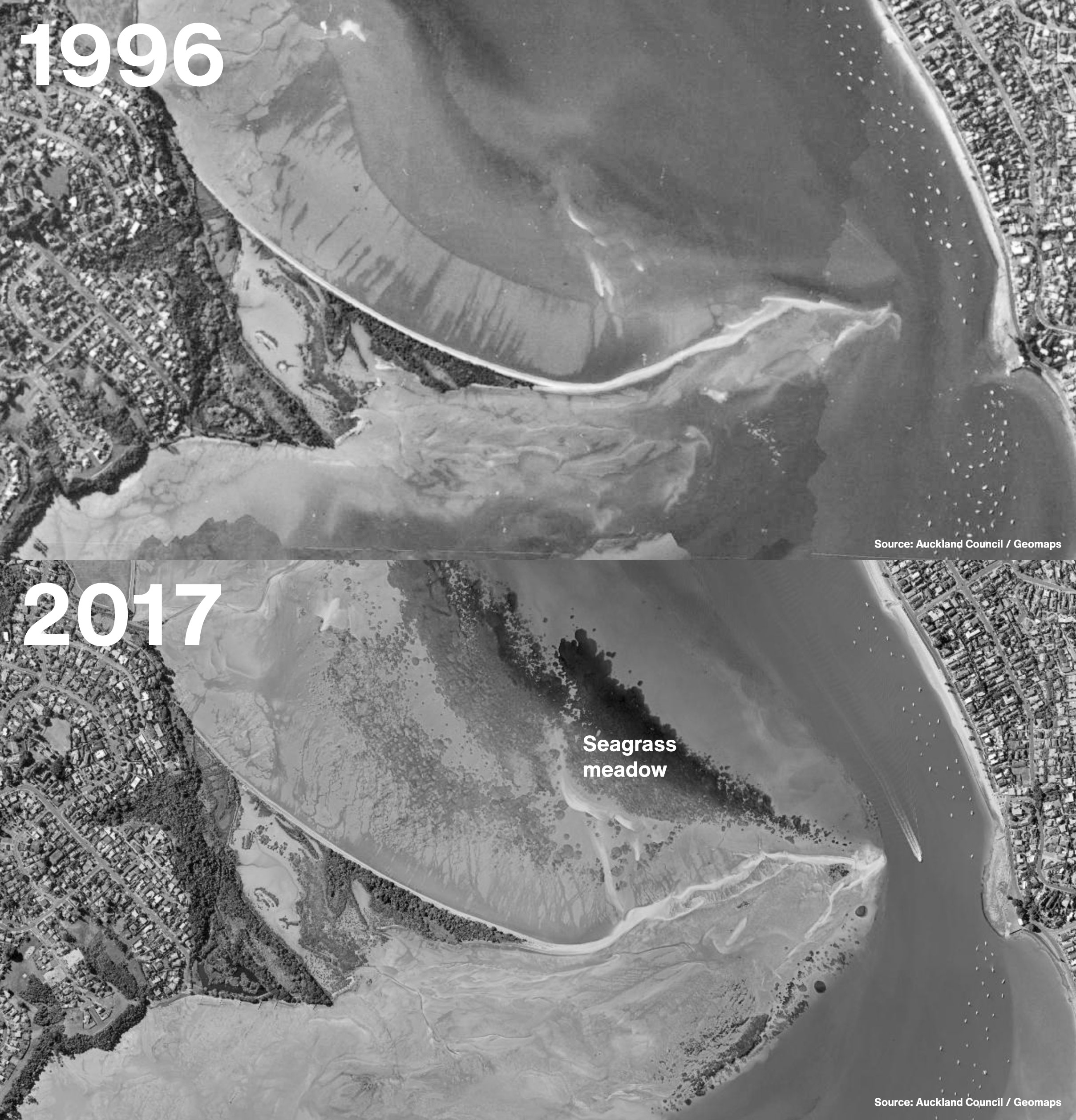
Overseas, I have seen dead seagrass build up on the shoreline, which can be unnerving to walk through when going for a swim or launching water sports equipment and it can be smelly as it rots on the beach. At first, I was concerned this seagrass was a new invasive species but I learned through conversations at the Tāmaki Estuary Environmental Forum (TEEF) that this is a native seagrass and a sign of environmental recovery. Good news!
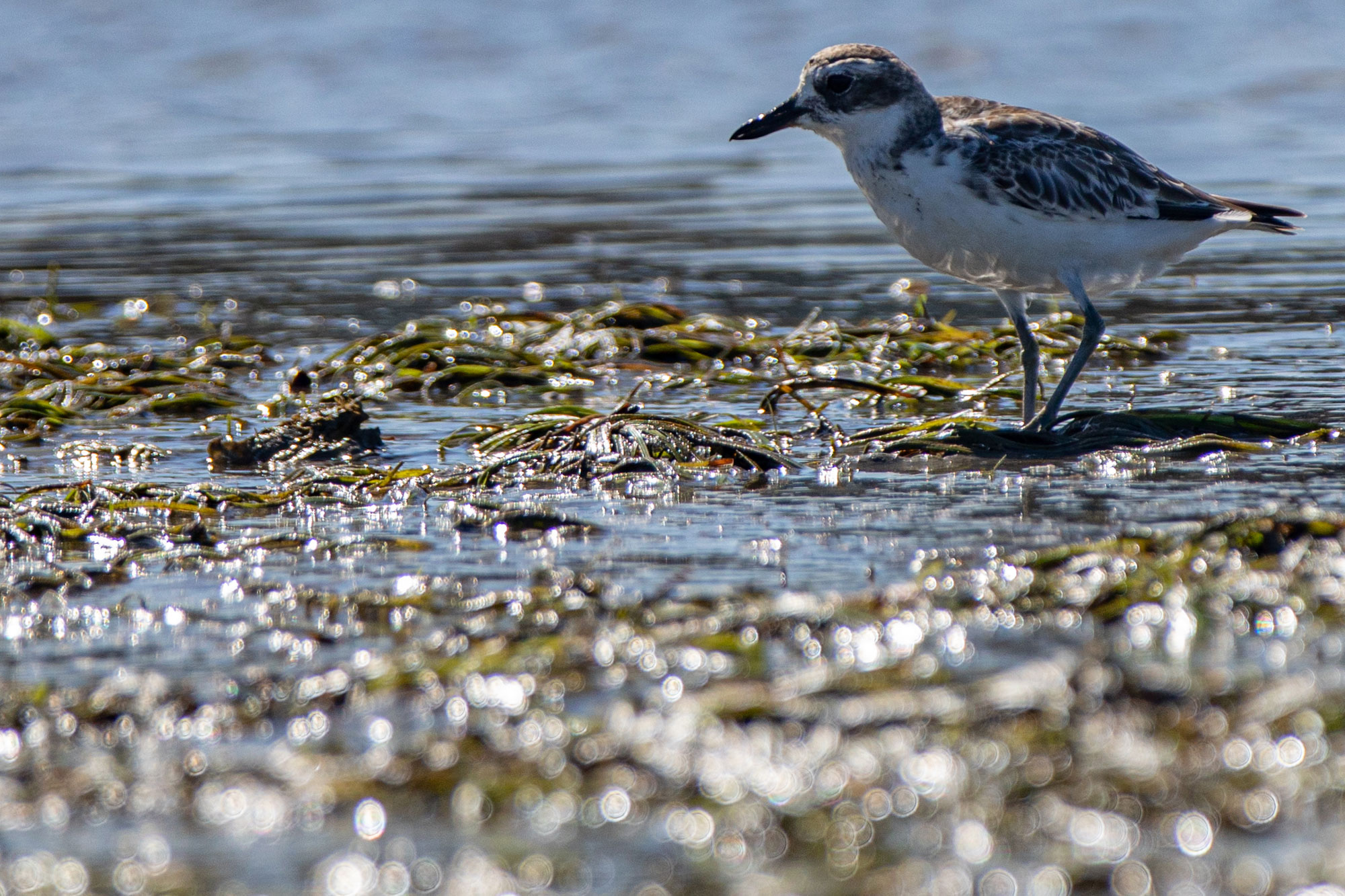
I now know that New Zealand’s only seagrass species, Zostera muelleri, is a flowering native marine plant that can thrive in shallow waters and estuarine ecosystems.
Between 1950 and 1960, seagrass had all but disappeared from the Tāmaki Estuary. [i] The loss of seagrass in our coastal waters is thought to be linked to several factors including the pathogenic Labyrinthula slime mould, high sediment loads which smother seagrass, nutrient enrichment from sewage outflows, increasing water temperatures, and destructive bottom fishing activities like dredging.
In recent years Auckland Council has been making progress with improving water quality in the Tāmaki Estuary and around Auckland in general. A 2019 study on Auckland’s water quality shows that sediment levels in the Tāmaki Estuary have reduced significantly and anecdotally my friends windsurfing on the Tāmaki Estuary have also noted an improvement in water clarity. The returning seagrass heralds a new healthier era, possibly with increasing biodiversity. But we still have a long way to go and it won’t be smooth sailing. The Estuary’s marine report card still scores D for water quality and E for ecology.
I want to see seahorses and piper return to the Tāmaki Estuary, along with large schools of fish for the hundreds of shags which once graced the area. We will also need seagrass to help with our climate change challenges:
Commonly recognised as the “lungs of the ocean”, seagrass is a primary productivity powerhouse, pumping significant volumes of oxygen (10 litres of oxygen per m2 per day) into the atmosphere and drawing down carbon dioxide. Although seagrasses cover less than 0.2% of the world’s oceans, they sequester approximately 10% of the carbon buried in ocean sediment annually (27.4 million tonnes of carbon per year). The resurgence of our seagrass meadows is timely in the battle to mitigate climate change.
Seagrass also contributes to water quality improvements by absorbing excess nutrients and stabilising sediment floating in the water column. These sediment stabilisation effects also mean that coastlines adjacent to where seagrass meadows are located tend to be more resilient to storm events. The returning meadows will also reduce the impact of boat wake traffic in the Tāmaki Estuary.
As we look forward, communities living around the Tāmaki Estuary can play a big role in promoting the resurgence of seagrass. Some of the main ways that people can make a difference is through minimising sediment and nutrient runoff from their properties. This can be achieved in several ways including planting native trees next to waterways, implementing best practice sediment trapping techniques when undertaking earthworks, choosing to retain permeable natural surfaces rather than laying concrete and paying attention to what goes into the stormwater system.
The return of seagrass is a reminder that when we understand what is happening to our coastline and take appropriate action we can all enjoy the benefits. I would like to see further education and information events to advise communities and our decision-makers on better management of the Tāmaki Estuary.
Leading the charge in promoting the health of the Tāmaki Estuary for over 30 years is the Tāmaki Estuary Environmental Forum (TEEF). The Forum’s main objective is to raise awareness of the ecological value Estuary and to create engaged and active local communities by operating as a network and partnership between the five Local Boards bordering the estuary, Auckland Council, non-governmental organisations, environmental and community groups. TEEF remains committed to promoting the value of seagrass as a critical habitat in the Tāmaki Estuary and is working with relevant partners on this issue. Follow us on Facebook to find out more.


